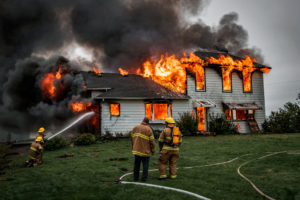
AI Seeks to Warn Firefighters of Deadly ‘Flashover’ Effect

When firefighters are fighting a building fire, a terrifying effect called “flashover” can occur: simultaneous ignition of every flammable surface in an area, triggered by reaching a critical temperature (around 1,1000°F). Flashover can be deadly for fighters, of course – and now, researchers from the National Institute of Standards and Technology (NIST) have developed a new, AI-powered tool to help predict flashover before it occurs.
“I don’t think the fire service has many tools technology-wise that predict flashover at the scene,” said Christopher Brown, a researcher at NIST who is also a volunteer firefighter. “Our biggest tool is just observation, and that can be very deceiving. Things look one way on the outside, and when you get inside, it could be quite different.”
The new tool, called P-Flash, predicts flashover based on data from a building’s heat detectors. To train the model to accurately predict flashover, the researchers input heat sensor data from a simulated fire in a three-bedroom one-story home, opting for simulated data because initiating thousands of house fires was, understandably, less feasible. The simulations were performed using NIST’s own Consolidated Model of Fire and Smoke Transport (CFAST).
5,041 simulated fires later, the model had learned how flashovers were affected by the tiniest changes: opening and closing doors, different furniture placements. Then it was tested on another 500 or so simulated fires, for which it correctly predicted flashovers a full minute beforehand in 86% of cases – and most failures were false positives. P-Flash could even work when the heat detectors in a building started failing, extrapolating data from the remaining sensors.
Still, the researchers wanted to ensure that their work was up to snuff. “You always want to be on the safe side. Even though we can accept a small number of false positives, our model development places a premium on minimizing or, better yet, eliminating false negatives,” said NIST mechanical engineer and corresponding author Wai Cheong Tam.
To tackle that issue, the researchers worked with real-world data produced by Underwriters Laboratories through more than a dozen experiments on similar homes to the one simulated for P-Flash. When faced with real-world data – and real flashovers – the model did a good job predicting flashovers from fires that started in open areas… but failed to predict fires that started behind closed doors.
The researchers believe that the “enclosure effect” – temperatures rising more quickly in enclosed spaces – may be to blame for this discrepancy, since the CFAST data was predominantly formed from fires in open spaces.
Not to be daunted, the researchers are pushing forward, planning to perform real-life experiments in-house to improve P-Flash’s ability to handle the enclosure effect.




























